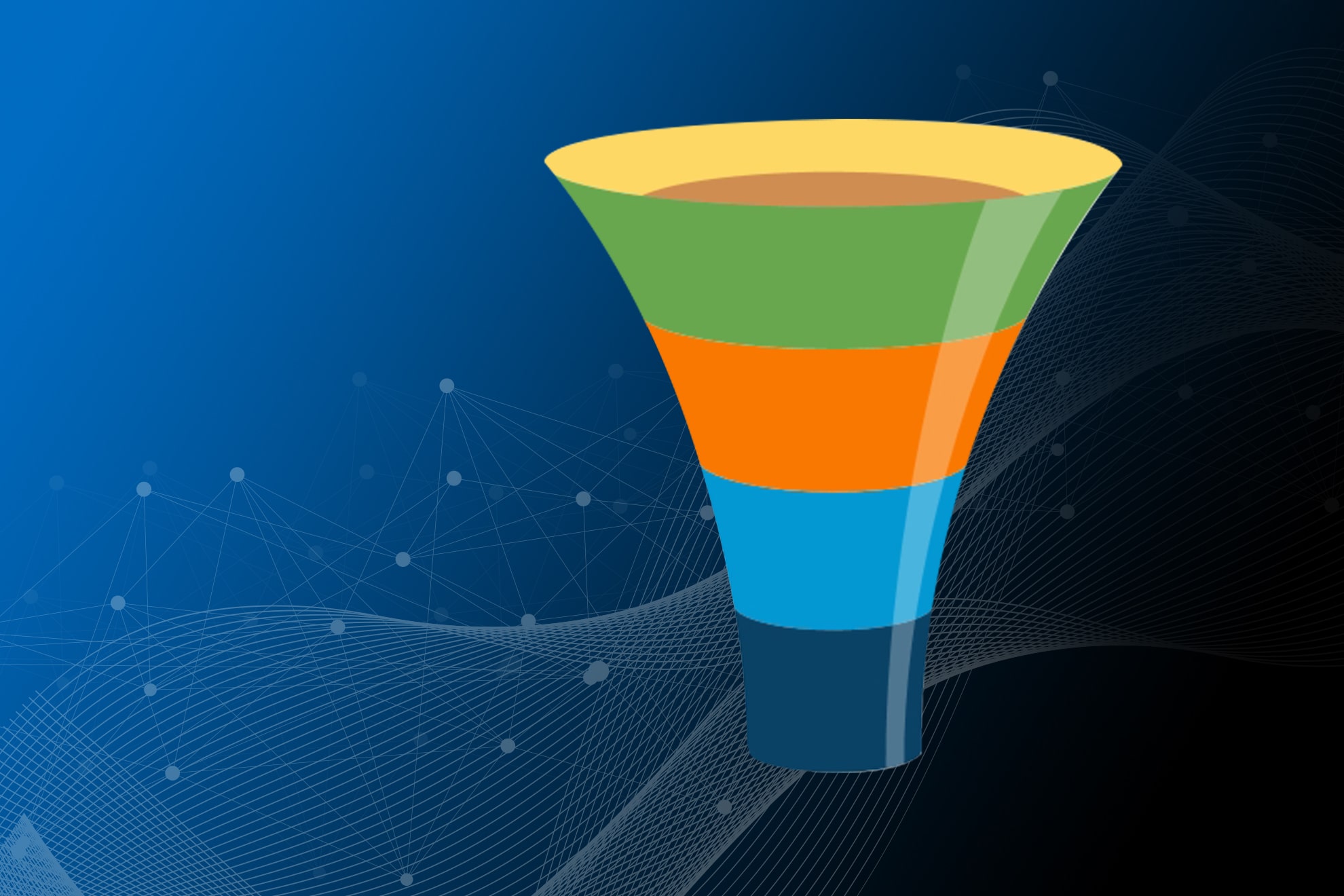There’s a lot that nonprofit organizations can learn from their counterparts in the for-profit world. Business budgeting, goal forecasting, and A/B testing for marketing messages can all be very valuable to charitable organizations.
Another concept that has huge applications for nonprofits is the marketing funnel.

What Is a Marketing Funnel?
A marketing funnel is a list of all the steps a company takes in order to acquire new customers.
Generally, businesses break their marketing funnel down into several stages, including leads, qualified leads, committed leads (those ready for the sale), and customers who have purchased a product or service.
Businesses create a marketing funnel to detail all of the activities that they need to take to get new leads all the way through the process to becoming a repeat customer.
Marketing funnels work because they provide a system for the business; instead of having to think through a new sales process for each potential customer, the business has a proven set of steps it can apply to each new lead.
These steps include using marketing materials, tours and test-drives, sales calls, meetings, etc. If a certain activity stops working, it can be replaced with a new strategy.
Businesses constantly test and measure the effectiveness of their marketing funnel to ensure maximum profitability.
A Simple Example
We are in the business of selling big metal typewriters. For those writers who want to feel the metal against their fingers and hear the clack as the rod and ink hit paper. Go figure.
On our website, we get 1,000 views a day. That results in 50 people signing up for our house list, mostly for updates on when the next batch of big old metal typewriters that have been refurbished will be available.
From our house list, we make 10 sales a day.
Over the past year, these numbers have stayed steady.
To increase sales, we should increase the visits to our website and signups to our house list because we have proof that, as these numbers increase, our typewriter sales increase.
If we see a decrease in sales, then we need to investigate where the drop-offs are, in website visits or in signups.
How Do Marketing Funnels Apply to Nonprofits?
Nonprofit organizations can and should be using their own version of the marketing funnel to help them efficiently acquire new donors. Sometimes called “donor funnels,” marketing funnels for nonprofits should be detailed paths that donors are led through in order to become lifelong supporters of the organization.
But a marketing funnel isn’t just a nice idea. In practice, it’s a series of traffic sources, landing pages, and emails that work together to:
· Capture Interest
· Nurture Interest
· Convert Interest
· Sustain Interest
Capture Interest
This is the process of finding potential donors who might have an affinity for the mission of the organization.
The absolute first step of a good marketing funnel is to capture contact information. Most often this is an email address, but it could be a mailing address or phone number, depending on what type of next step you’re looking for.
Try using an incentive to get them to share their e-mail address with you. This could be as easy as a splash page or:
· A discount on membership or event registration
· Free invites to educational webinars
· Action alerts and volunteer opportunities
· Your newsletter delivered via email
· Photo contests, sweepstakes, and giveaways
Nurture Interest
During the cultivation phase, nonprofits work to build relationships with their prospects so that the person or company is ready to make a financial commitment to the organization.
This second step is the proving ground. This is where you show them that your organization knows its cause, is doing great work, and is being successful. This is where you offer proof points, success stories, and stories showing donor impact.
Once someone has joined your list, they’ve raised their hand. They’re ripe for the asking. Your job is to offer compelling reasons to do more.
Email plays a critical role during the nurture phase. Most email marketing software tools allow you to send the right message to the right people at the right time.
–The right message: For each acquisition campaign, write a series of email messages designed to nurture interest and deeper action. The key here is that the messages have to be relevant to the campaign.
–The right people: Before you start capturing emails, make sure you’re properly segmenting contacts as they join your list. Capturing each contact’s activity and interest allows you to nurture interest with relevant follow-up messages.
–The right time: When someone signs your petition, joins your newsletter, etc, they’ve expressed interest. You are on their mind. But not for long.
Convert Interest
This is the “make the sale” phase, where the nonprofit asks the prospect to make their first gift to the organization.
You’ve contacted your donor, they’re opening your emails, and liking your Facebook updates. The next step is to pop the question. Give them ways to get involved in the organization by volunteering, attending an event, signing a petition, or donating to the cause.
Once you ask, and they take the next step, you are in. You have successfully cultivated a new community member who is ripe for fundraising.
And the best part is that if they decline, it’s not game over; you’re just back to the second step. You still have more time to prove yourself, to grow your relationship with this person, and to make sure they are committed to your cause. Do your best to learn what works (A/B testing or other ways to evaluate your communications), and then try again.
Lastly, make sure you monitor the effectiveness of your promotion: the conversion rates of your emails and landing pages. Anywhere you see a drop-off is an opportunity to try again with a different tactic.
Sustain Interest
After a donor makes their first gift, the nonprofit continues to cultivate the donor in the hopes that the donor will continue to support the organization in the future.
As with for-profit companies, the marketing funnel for nonprofit organizations must be planned well and tested often. The most successful organizations are constantly dropping donor activities that don’t produce the desired results and replacing them with new and innovative fundraising strategies.
If your nonprofit doesn’t have a marketing funnel in place for your donors and prospects, now is the time to create a strong and sustainable funnel for your organization.



